43 reasons for Vitamin D deficiency

People have gotten far less Vitamin D from the SUN in the past 40 years
- Air conditioning - to avoid the hot sun
- air conditioning in home, auto/bus/train, and workplace CLICK HERE
- Air Conditioning probably has decreased vitamin D
- Hypothesis – Air conditioning disease is the result of less vitamin D – China March 2011
- Increased use of multi-media indoors - TV, DVD, video games, and internet access
- More indoor jobs - more office workers, fewer farmers
- More people living in cities - where there is less UV and they have less opportunity to be outdoors
- Air pollution reduces UV and thus vitamin D
- UVB, which produces vitamin D does not reflect off of buildings very well *
- Want whiter skin especially women
- Fear skin cancer -
- Overview Suntans and melanoma Tanning from Wikipedia
- Actually, you can get enough vitamin D without getting much of a tan, much less get skin cancer
- Melanoma probability increased 2X if have 5 or more sunburns (Not necessarily at the same location as the burn)
- Most sunscreens increase the growth of skin cancer
- Actually you get 1000X more cancer by not having the vitamin D *
- Most sunscreens increase skin cancer - May 2010
- Indoors more because of a disability *
- Additional reasons for less vitamin D in past 40 years (beyond lack of sun)
- Less cholesterol - which the skin needs to produce vitamin D
- More Obesity
- Obese people need more vitamin D PDF file - 2000
- Map of BMI increase - Feb 2011 with many links
- Obese people spend less time in the sun
- Livers of those who are Obese do not function as well, and so do not provide as much vitamin D
- More soft drinks and fructose - uses up Calcium, which uses up vitamin D
- surfers in Hawaii (PDF), who drank a large amount of cola soft drink, had low levels of vitamin D
- Too much fructose reduced both serum and active vitamin D in rats – April 2013
- HFCS consumes Magnesium needed by Vitamin D
- note: Fructose also reduces active vitamin D actually getting to cells - not seen by blood tests
- Increased consumption of Ultra-processed foods
- Meat from factory farms - has far less vitamin D than from free-range farms
- eggs, chickens, sheep, pigs (500 IU/teaspoon of lard), farmed salmon has 4X less vitamin D than wild salmon
- Wild game, which has been outdoors all of the time, has much more vitamin D - especially in the organ meats
- Eating less fatty meat and eggs in an attempt to reduce cholesterol. fatty meat was discovered to have a liver-activated form of vitamin D in 2014
- Drinking low-fat milk which provides only 40% of the vitamin D to the blood compared to whole milk
- 6X reduction in consumption of whole milk (1970 ==> 2010), thus 100 IU/glass ==> 40 IU/glass for most people
- Reminder: Most Vitamin D is fat soluble, less fat ==> less vitamin D
- More drugs which consume or block vitamin D
- Antiseizure, Prednisone, AIDS drugs, Orlistat, Questran, Dilatin, Phenobarbital, Rifampin, Steroids, Calcium channel blockers
- Cholestyramine, Mineral Oil, , St Johns Wort
More use of polyunsaturated fats decreased bio-availability of vitamin D
More windows : UVA from windows appears to destroy vitamin D (produced by UVB, which is blocked by windows)
- More wall space devoted to windows in homes, offices, and public buildings
Increased salt consumption which decreases essential Vitamin D cofactors: Magnesium and Calcium
Fluoridated water decreases Magnesium essential for use of vitamin D] - Hypothesis?
Strong magnetic fields reduce vitamin D levels] Perhaps from MRI
PCBs increase the chance of deficiency by 3%]
((Plastics in bloodstream increased risk of Vitamin D deficiency in women by 22 percent - 2016, 2017|Plastics in pregnant women increased risk of deficiency by 22%))
Roundup (glyphosate) decreases vitamin D]
Flame Retardants also retard active vitamin D
- Flame Retardants were added to US clothing, mattresses, and cushions by 1980
- Doubt that flame retardants are used in developing countries
- Reasons for low vitamin D levels which go back more than 40 years*1. Less liver eaten - which used to have very large amounts of vitamin D
- A way to get 40X more vitamin D from beef liver back were it used to be
- Iron deficiency is a cause of Vitamin D deficiency
- Less Magnesium in foods and drink - Magnesium is needed to utilize vitamin D (as well as build bones)
- Magnesium and vitamin D
- Magnesium deficiency epidemic is similar to the Vitamin D epidemic
- Reasons for lower Mg:
- Use of artificial fertilizers rarely restores Magnesium
- Refined grains and refined sugar have very little Magnesium
- Softened water/bottled water usually have all of the Magnesium removed
- Floridation of water blocks Magnesium
- More seniors
- seniors get 4X less vitamin D from the sun than youths (less Cholesterol in skin) *
- more people are now living >50 years
- Seniors tend to be outdoors less+In vicious circle: low D makes for lower D
- Also: seniors appear not to activate vitamin D as well (in liver, kidney, skin, etc)
- More cataract surgery ==> avoid bright light
- Excessive clothing (burka, nun habit, . . .)
- especially if also living far from the equator or avoiding the hot sun
- Have a condition which Consumes vitamin D
- Chemotherapy - (be careful, adding vitamin D increases the impact of some Chemo)
- MS prevented AND treated by vitamin D, a mountain of evidence
- Have a condition which Prevents Adsorption in the gut
- Bariatric Surgery, Colon Cancer, IBD UC and CD, Crohn's
- Gluten Intolerance, Celiac Disease, Cystic Fibrosis
- Fat malabsorption syndromes from 1985 PDF file
- (Supplement options if have gut problem: Option 1 - Option 2)
- Have a condition which Prevents Conversion to active vitamin D (not noticed by Vitamin D BLOOD tests)
- Kidney vicious cycle
- HIV both prevents conversion and consumes vitamin D
- Have 1 or more of 6 genes which restrict how much vitamin D gets to cells
- Restrict how much Vitamin D is semi-activated by the liver or tissues
- Restict how much semi-activated Vitamin D is carried to kidneys for full activation - not seen by blood test
- Restrict how much Vitamin D is activated by kidneys or tissues - not seen by blood test
- Destroy Vitamin D before it can be used - not seen by blood test
- Restrict activated vitamin D from actually getting into cells - Vitamin D Receptor - not seen by blood test
- Have a condition which requires more vitamin D - or time in the sun
- Pregnancy Not just bone. Need lots of vitamin D - Before, During, and After
- Dark Skinned and living far from the equator or avoiding the hot sun
- Surgery and trauma many files
- Lactose Intolerance or Vegan – and thus not get vitamin D from milk in US and a few other countries
- also reduces Calcium intake, needed to build bones, prevent Myopia, prevent cardiovascular disease
- Health reasons to avoid sun (other than skin cancer) burn easily - redhead, etc - there are alternatives
__ Work long hours, Shiftwork diseases are often due to lack of vitamin D
Live far from the equator , even more of a problem if the region is also cloudy (Washington State, Scotland)
DDT and some other pesticides in our bodies reduce the vitamin D perhaps 3 ng
Winter births - 11% more likely for adult to be deficient
- Need to take more vitamin D as an adult if born in winter
- Myths about vitamin D caused people and researchers to not consider useful amounts
- Myth You can easily take a toxic amount of vitamin D - started in the 1950s by a wrong diagnosis -scared off research and use for 50 years
- Myth Spend 10-15 minutes in the sun three times a week and your vitamin D will be fine. (This myth started out as a hypothesis)
- Myth Eat fish three times a week and your vitamin D will be adequate
- Myth Can get all of your vitamin D needs from food
- Myth Drink a cup of milk every day and your vitamin D will be okay
- Myth A daily multivitamin will meet your vitamin D needs
- Myth You do not develop vitamin D deficiency if you live in a warm, sunny place
- Myth Eating a healthy diet will take care of your vitamin D needs as well
- Myth More Kidney stones if take more vitamin D
- Myth Need lots of Calcium while getting lots of vitamin D ( just the opposite actually)
- Myth No tan is a safe tan (skin cancer can happen in just a few minutes)
- Myth If I sunburn easily, I need to stay out of the sun ( No, being sunburned easily is often a sign of being very vitamin D deficient)
- Myth Should reduce cholesterol ( no, actually should increase cholesterol - to produce vitamin D)
- Myth Sunlight alone causes skin cancer (so why does melanoma often occur where the sun does not shine)
- Myth Can get enough vitamin D from the sun to last you thru the winter
- Myth Can get enough vitamin D even if wearing lots of sunscreen
- Myth You can be allergic to vitamin D (allergic reaction is often an indication of low Magnesium)
- Myth Vitamin D2 is almost as good as vitamin D3 (several studies have shown that vitamin D2 DECREASES serum levels of D3)
- See also Vitamin D - Facts and Myths
Lets look at vitamin D deficiency from another point of view
People evolved under conditions which have since changed
People were outdoors every day (so we could slowly adjust to the annual increase of UVB without sunburn)
The bright sun was available throughout the year (this assumes, during the last 20,000 years, that most people lived within 30 degrees of the equator)
That each person would not live very long (seniors get far less vitamin D from the sun than youth)
That people were not obese (obese people need at least 2X more vitamin D, which is secreted away in their fat)
- If there was any weight gain, it happened near harvest time when there was lots of vitamin D and that added weight/vitamin D was gone before the next harvest
- People ate animals that lived out of doors, so there was lots of vitamin D in the meat, especially the organ meats
- Also, the animals generally ate green grass, etc. had lots of vitamin K2, which is a vitamin D cofactor
Much of the above information is in a chart, which also shows the vicious cycles
Low D ==> get a disease, which further reduces the vitamin D levels
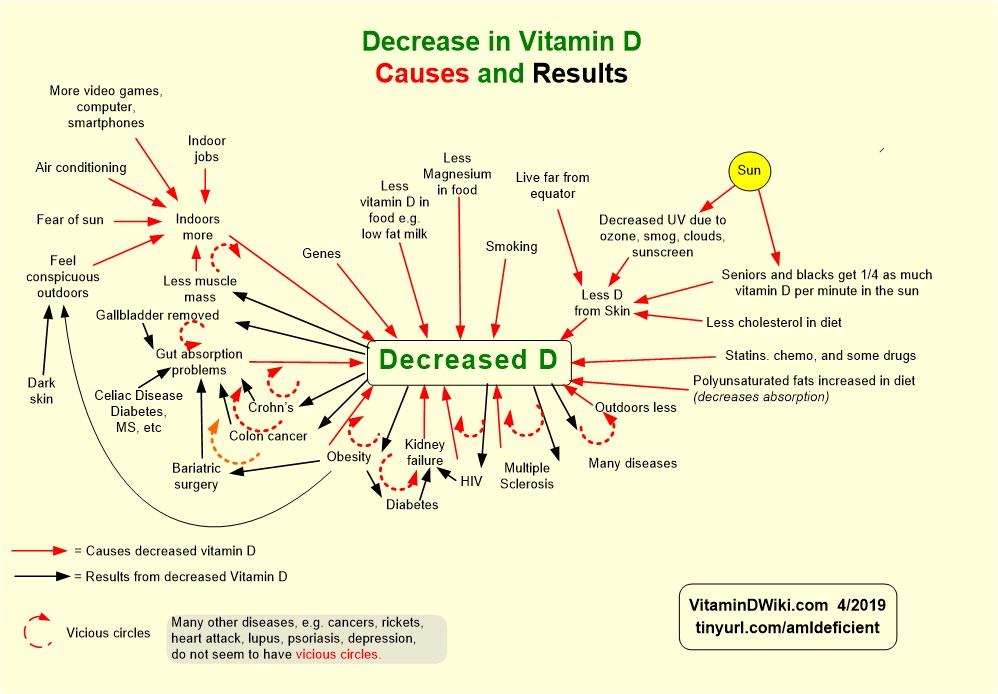
CLICK HERE for Overview Deficiency of vitamin D, which contains the chart about
Some diseases associated with low vitamin D have had big increases in the past few decades
Autism

Diabetes
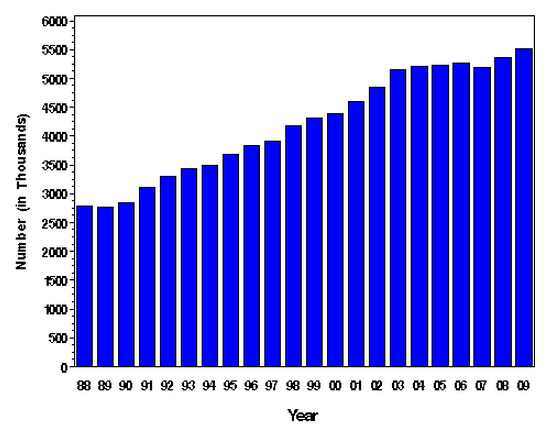
Obesity in US from WikiPedia
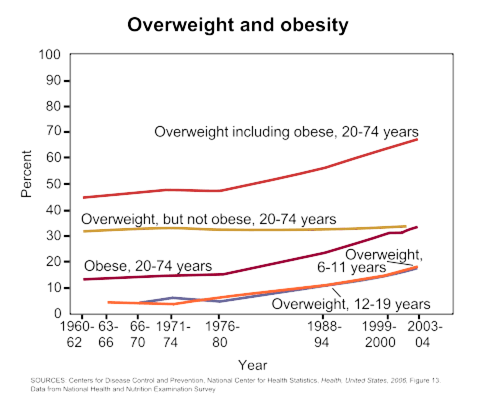
I!!ncrease in Childhood Cancer in recent decades

Decrease in cholesterol which the skin needs to make vitamin D in the past 40 years
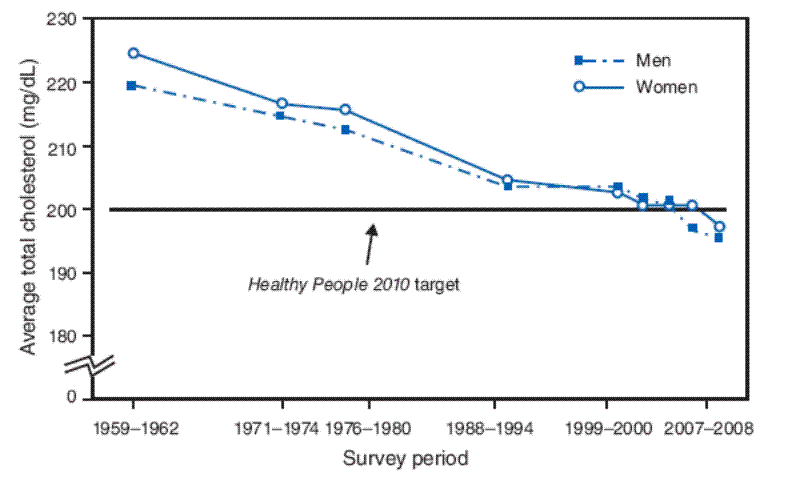

The perfect storm
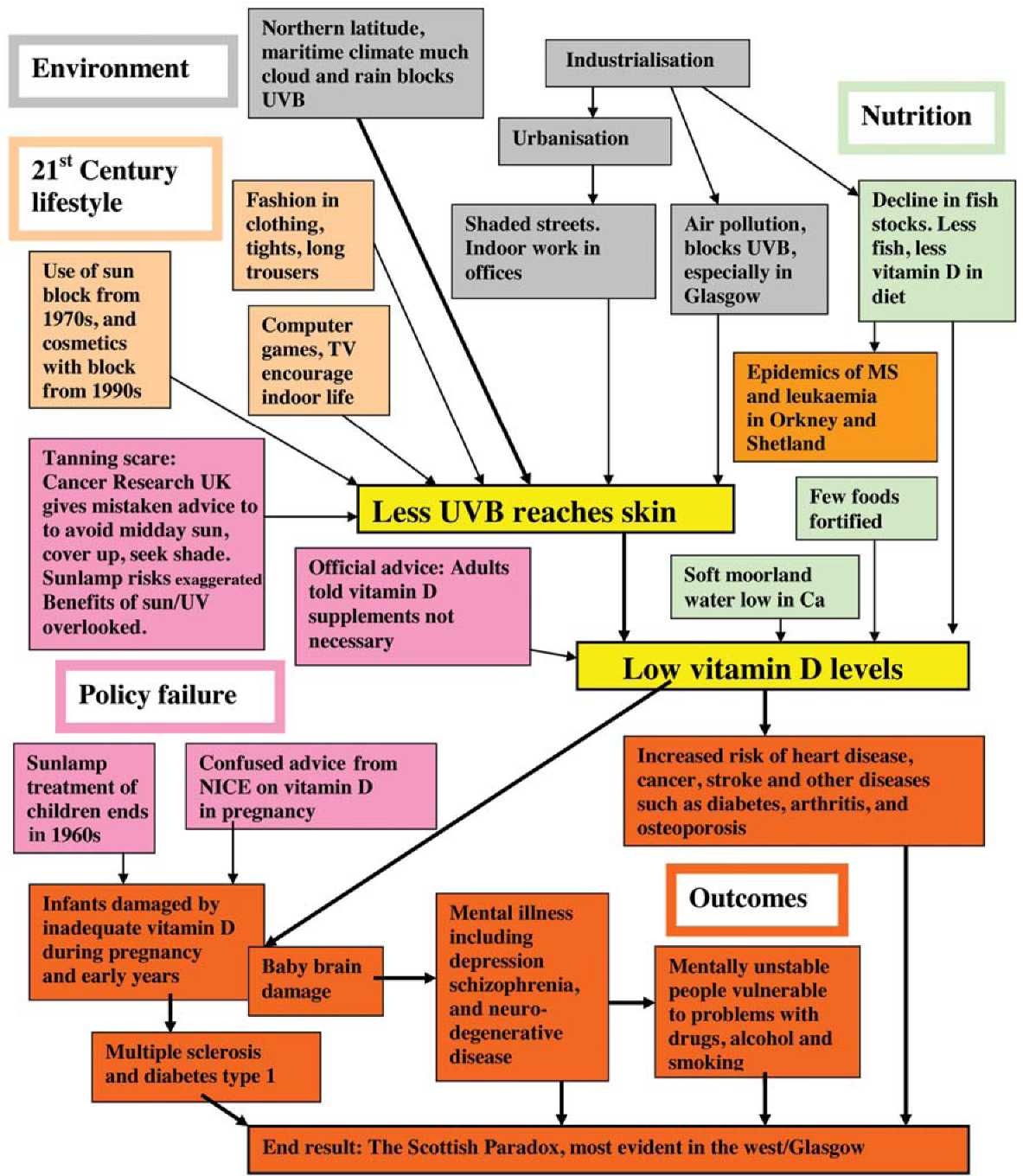
---
A few things INCREASE vitamin D levels
Oral contraceptive use associated with higher levels of vitamin D – thesis June 2012 but this idea is contested.
See also Vitamin D Life
Incidence of 22 health problems related to vitamin D have doubled in a decade - far more than the above charts
Vitamin D reduced so low that Victorian age diseases are returning
Criteria to associate a disease with the lack of vitamin D by Vitamin D Life
Overview Deficiency of vitamin D includes a list of high-risk groups
Ways to increase the amount of vitamin D you get from the sun
Why do animals seem to need more vitamin D than humans - they don't, we need the same, but Vets are paid to have healthy patients
3X more kids were vitamin D deficient when entering UK hospitals than 4 years before – Oct 2014
- Only half as many people had >30 ng of vitamin D 16 years later (that was 2004 - How much lower since then?)
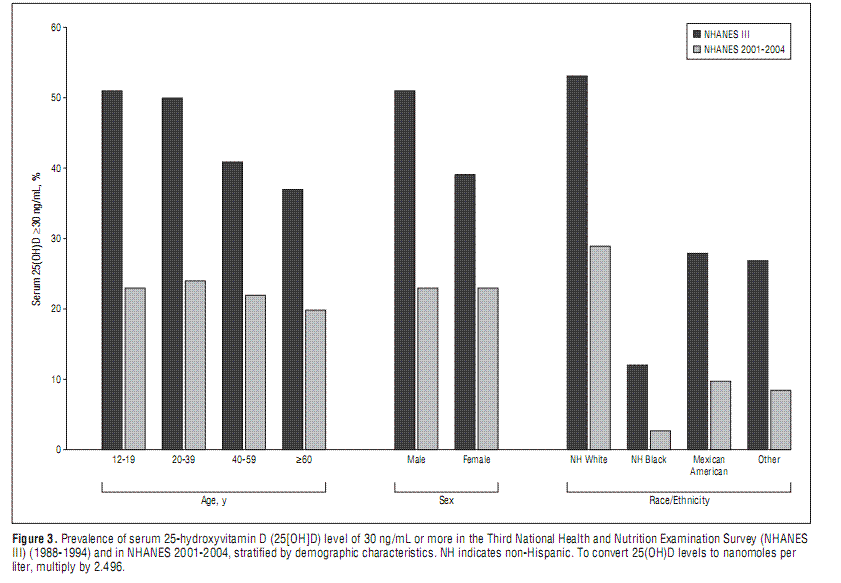
So, many health problems due to less sun
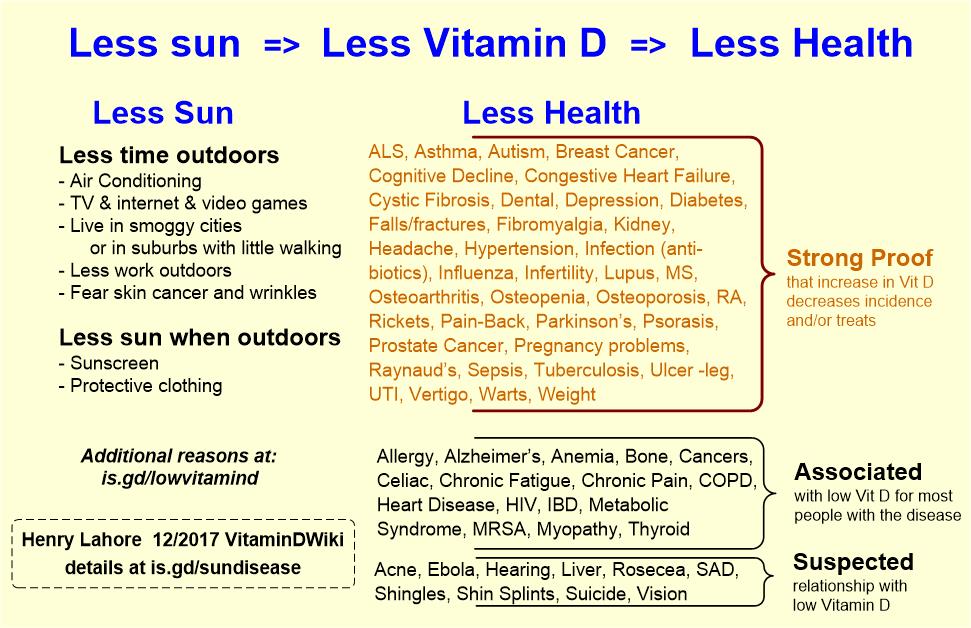
Short URL = http://is.gd/lowvitamind
